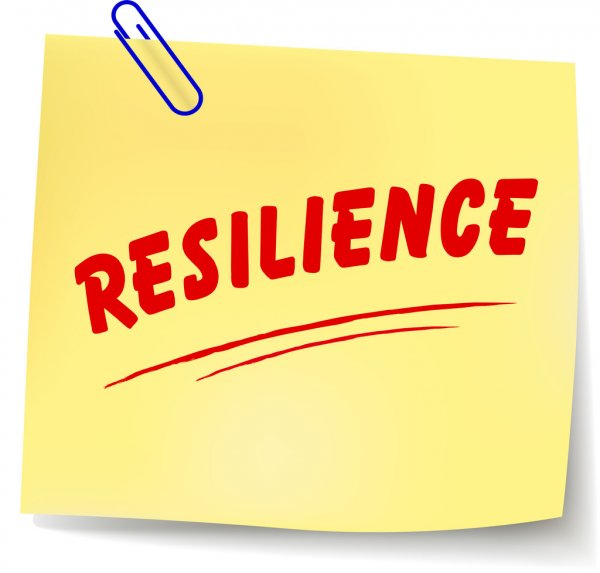In school, as in any other area of life, it is not easy, but you can introduce the approach of resilience, free your imagination, reflect, debate, analyze and embark on a romantic search for the meaning of genuine education.
Education for critical reflection and debate that promotes the internalization of values and responsibility in thinking and acting will help resilience. Even in the face of old problems, you can be creative and advance in reflection.
It will be helpful to cultivate optimism and build stories of hope, not just promote the bad news and become “correveidiles” in the case of the news that amplifies the negative and does not make news of the positive.
Resilience research leaves no room for doubt, and it is built through safe and affectionate personal relationships. A student who feels marginalized, invisible, or stigmatized as likely to have inappropriate behavior, will have internalized the feeling of “I can’t” and will drop out of the school institution. On the contrary, a student who feels that school is a suitable environment, that he has a sense of belonging, and feels recognized will probably make an effort and commit himself to the school institution.
On the other hand, resilience is forged when people open up to new experiences and act interdependently with others. Hence, various investigations find that resilient people are characterized by their social competence, ability to solve problems creatively, self-esteem, optimism, and desire for independence. If this is the case, it educates resilience by training these interpersonal skills so useful for life.
One of the most exciting contributions of the resilience approach has to do with the protagonism of the actors, since it reformulates the power relations, considering the other, not as a beneficiary of the aid, but as co-responsible and author of their learning, of his actions, ultimately his life. Hence, resilience in the school is also promoted by granting the students, their families, and teachers authorship and responsibility in the educational process.
Western culture has inked individual capacity and responsibility as a pillar of personal and social change. From the perspective of resilience at school, talking about individual responsibility outside the community is a mistake since it makes us lose contact with the standard and interpersonal, contributing to the fragmentation and alienation that so many teachers, students, and families experience in our day. At school, the associative value is reflected in the organizational connection and communication processes, which promote trust, tolerance, cooperation, and the transcendence of our actions.
And, once again, let’s say that a sense of humor is a tricky thing. So at school. When the school seriously considers educating in the sense of humor, it will be setting both cognitive and socio-affective objectives. The education of creativity and alternative thinking, the development of empathy, confidence, conflict resolution, and even self-esteem are related to learning to laugh at ourselves and accept our imperfections and focus on our strengths.
And if all this is possible at school, won’t an education for resilience be necessary for the different Universities and the most important of all: the family? For sure, YES. It would be the way to help not only to heal the heart but also to make scars a source of learning.
Be active
At home, we are contained, but creativity, inventiveness, productivity, ingenuity … have no limits. Now is the time for you to do things! The resilient person looks for new hobbies like cooking, plays board games or creates them, makes your website, looks for new hobbies… This song from Calle 13 can surely help you understand this idea! A song that tells us about the importance of not staying still, not stopping, of moving! As he says in one of his lyrics: “if you don’t have a body, mix up your ideas!”
The products linked here are for sale on Amazon. They include an Amazon Associates Affiliate code that gives us a small percentage of sales. The blog authors select the products, but neither Amazon nor the publishers of the books or manufacturers of the products participate in such selection.
Related to the concept of being an active person is increasing the capacity to fight: defending your interests and that of others to achieve objectives, whether individual or collective.
Have initiatives
As we said before, being resilient is moving and reinventing yourself. The trabgarlic has changed, relationships have changed, the perspective and way of life of what we call “first world” has changed, and we will be the ones to redefine this new situation, so you can start writing and have ideas about it. A good initiative!
The most innovative projects of the future will depend on those who design them, and these will indeed involve resilient, creative, innovative, and daring people.
Be independent
Learning to live with yourself can be difficult, but now it is more necessary than ever. Dependence on others exists, but overdependence creates more states of anxiety and insecurity. Plan what you can cook on your own and take a chance! If you have to do a task and your partner or family cannot help you, find the solution for yourself and try! To change this chip, we must first change our thoughts: what prevents you from being independent?
When you have beaten this stressful situation and become a more resilient person, you will see how the previous strategies were not effective and, now more than ever, and you will try new ways to adapt!
Resilience allows humans to adapt to adverse circumstances. Are you resilient? Do you want to be more? We explain what resilience is and the psychological tricks to have it.
30 AUG 2019 · Last modified: SEP 17 2021 · Reading: 14 min.
Orientation and personal growth
Resilience is an aptitude that allows human beings to adapt to adversity. According to the Royal Spanish Academy of Language or the RAE, resilience is the ability of a living being to adapt to a disturbing agent or an adverse state or situation.


